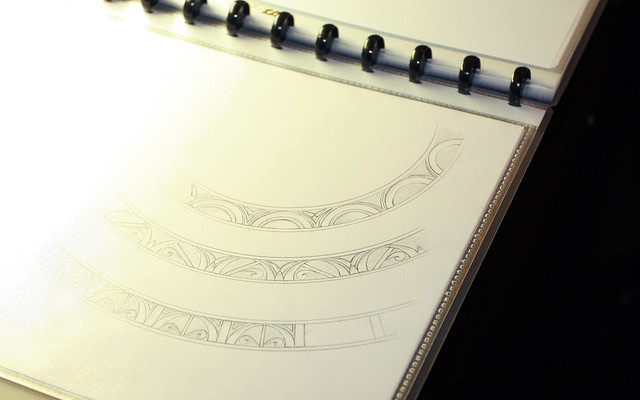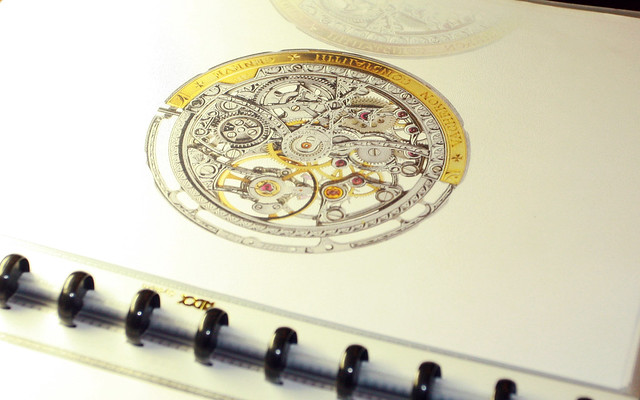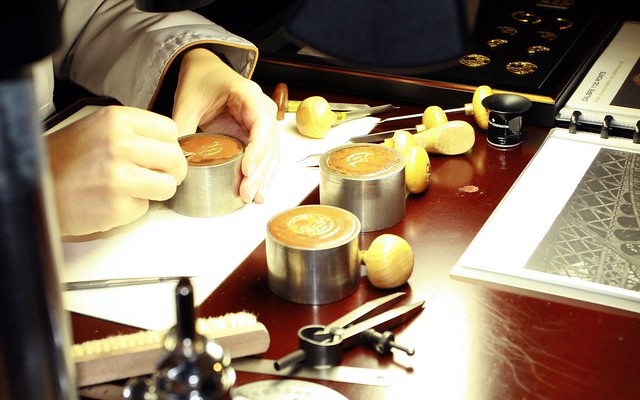 In the main hall of SalonQP this year, huddled under a desk lamp, and hunched over a very small object was a lady. From afar, she looked liked she could have been doing a spot of brain surgery or perhaps laboratory work, as she peered through the twin eyepieces of a high-powered light microscope. In fact, she is one of the many, highly skilled workers who hand engrave the movements and other watch parts for Vacheron Constantin.
In the main hall of SalonQP this year, huddled under a desk lamp, and hunched over a very small object was a lady. From afar, she looked liked she could have been doing a spot of brain surgery or perhaps laboratory work, as she peered through the twin eyepieces of a high-powered light microscope. In fact, she is one of the many, highly skilled workers who hand engrave the movements and other watch parts for Vacheron Constantin.
The piece on which she was working, was the intricately-engraved rotor of a Patrimony, probably the Patrimony Traditionelle open-worked perpetual calendar, by the look of the incredible detail she was applying.
She begins with a series of sketches / watercolours which set out the general theme of the engraving. In the case of the open-worked perpetual calendar, the theme is the Eiffel Tower, and in particular, the iron work that supports this Parisian icon (see sketch on the right). The engraving on the rotor, and indeed other movement parts, and through to the skeletonised supports and case, is based on the grillwork.
Interestingly, the only non-structural elements of the Tower are the four decorative grillwork arches, added in the architect's (Stephen Sauvestre) sketches, which served to reassure visitors that the structure was safe, and to frame views of other nearby architecture.
But, to get back to the VC. The sketches form the basis of the engraving, which is carried out through the use of specialist tools, and highly trained artists. The tools will be familiar to many, as they resemble wood-working tools, but are much finer. Each piece to be engraved is placed in a protective wax which allows the piece to be held firmly in place while the engraver works his or her magic. And magic it most certainly is. Each tiny, measured flick of the wrist forms another perfectly executed element of the design.
Each little tool (or graver) has a characteristic shape - round, lozenge or knife, for example. Each tool is also fitted with a shaped wooden end, which fits into the palm of the engraver. As you can see in the picture on the right, there's a beauty in the tools themselves. You can also see one of the original photos of the Eiffel Tower, from which the design is taken.
I must admit to being very taken by this process. Watching the almost hypnotic action was both pleasing and comforting; it reminded me that we are still able to make beautiful things with our hands, and do not always need to rely on machines. Of course, all of this comes at no small price. But hopefully you'll agree, that the end results are startling!



No comments:
Post a Comment